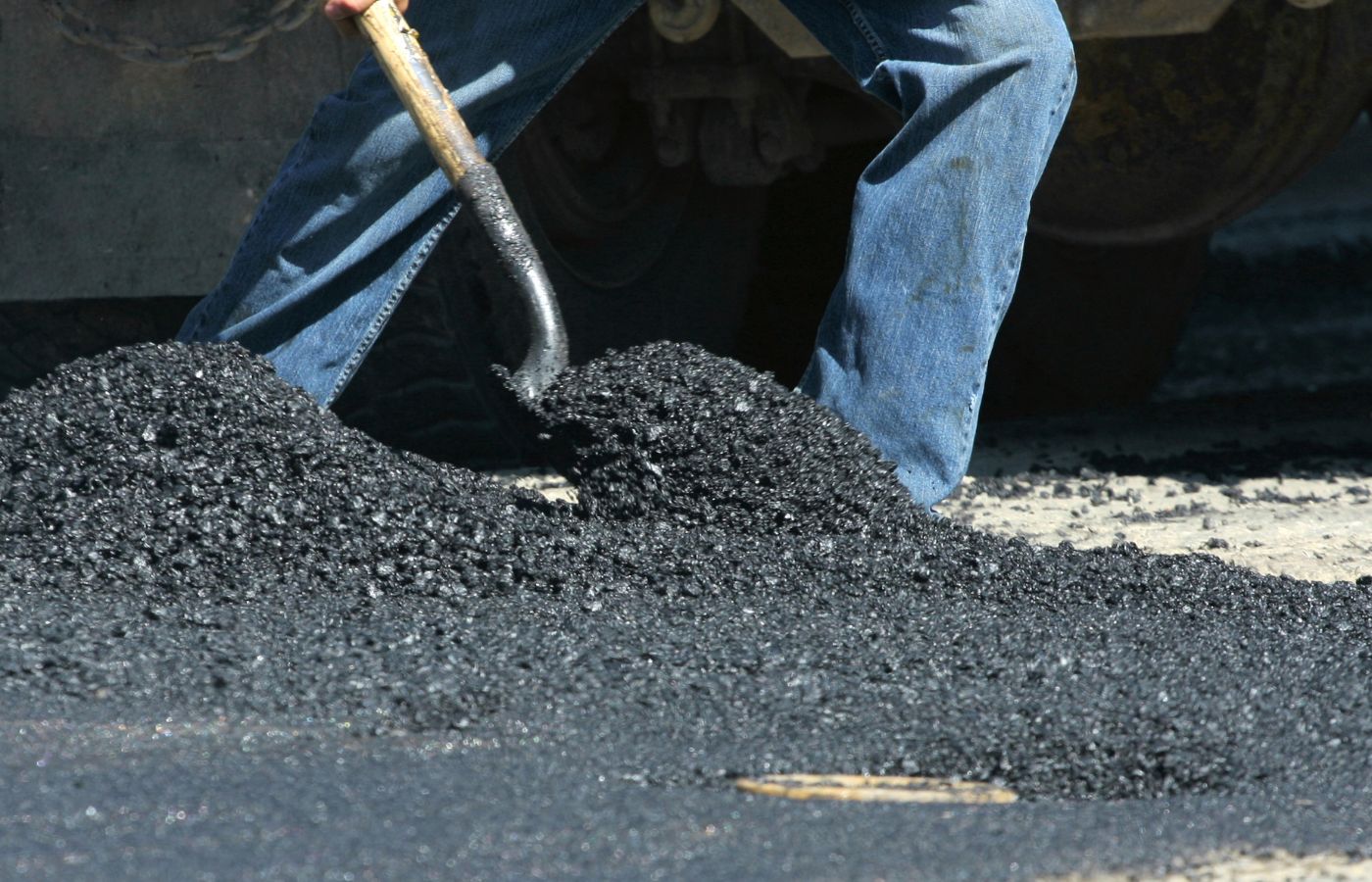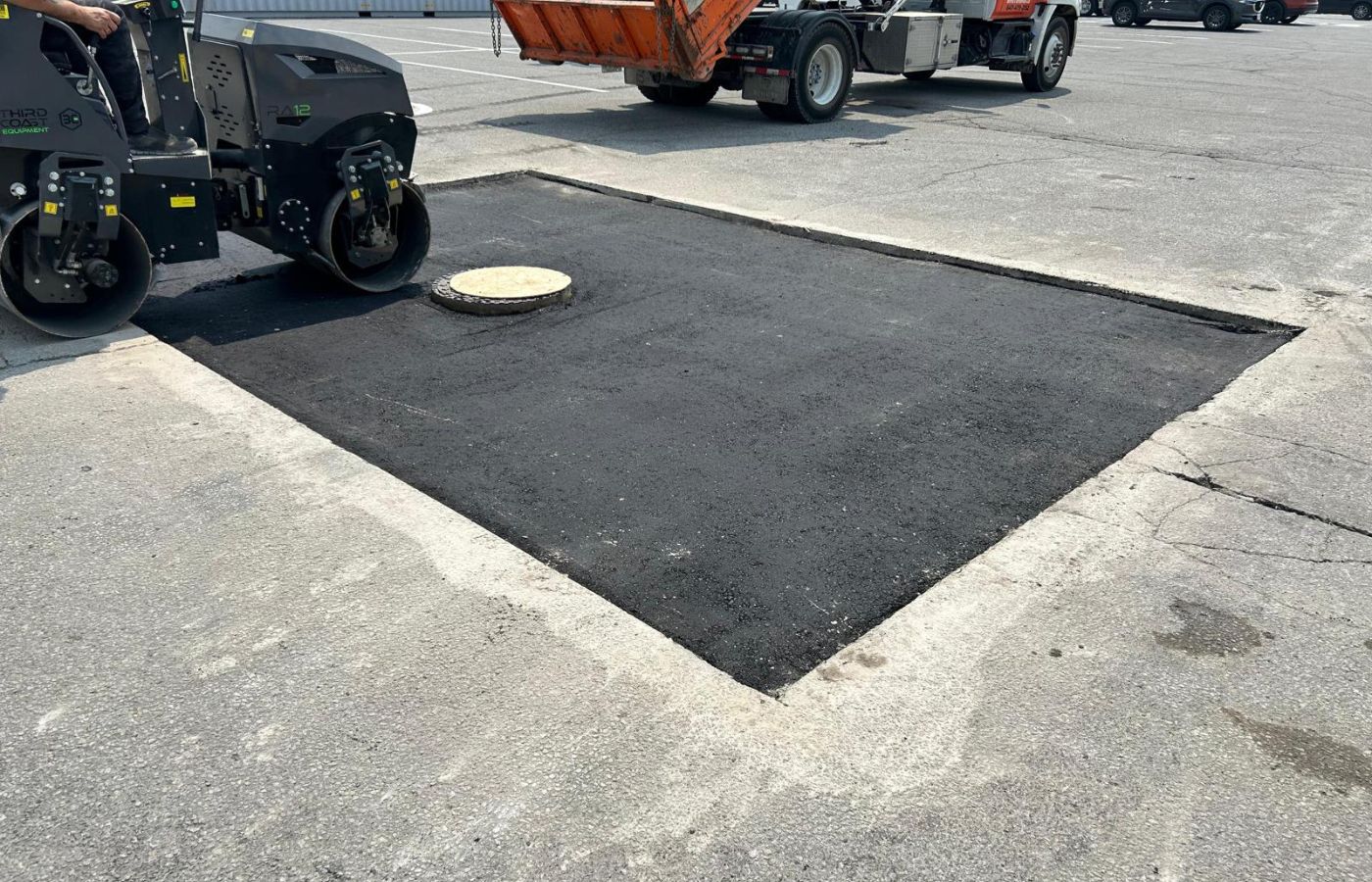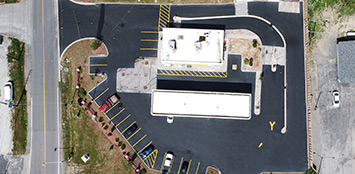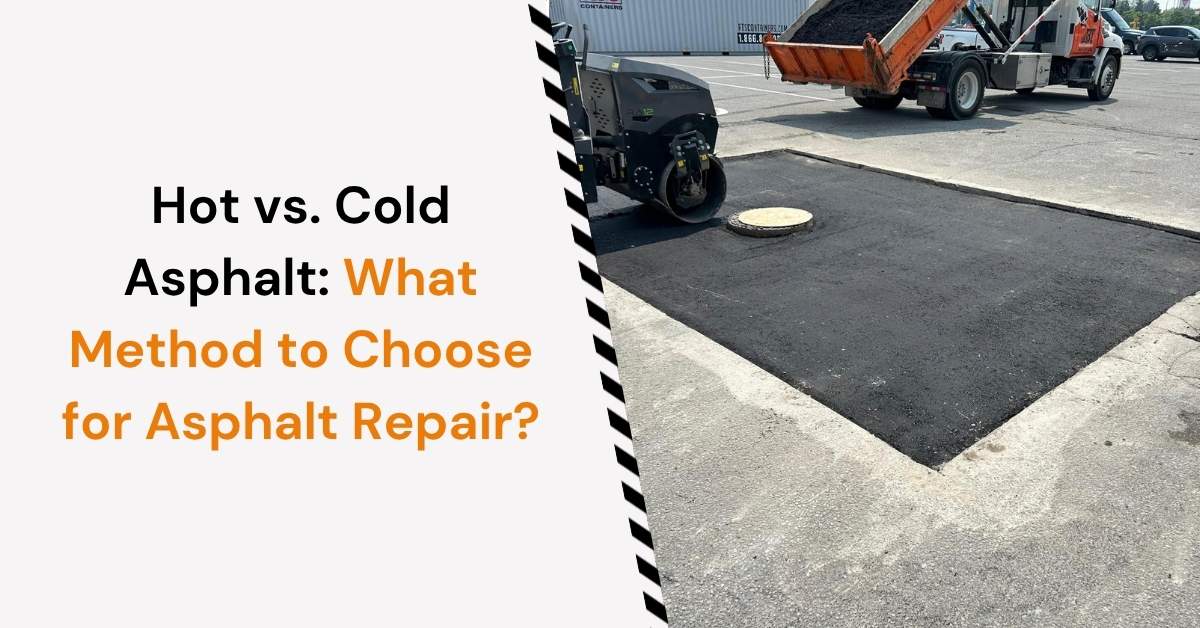If your driveway is cracking apart or your commercial lot has a pothole that’s only getting worse, you’re probably wondering which asphalt repair method will actually hold up. Is it better to go with hot asphalt or cold asphalt? The truth is, the method you choose can make a huge difference in how long your surface lasts, how good it looks, and how much it’ll cost you over time.
There are a few different asphalt repair methods out there, but hot and cold asphalt are by far the most common. Each has a time and place. Some are great for fast patches in winter. Others are built for long-term strength and a clean, seamless finish. The right choice comes down to your traffic load, the condition of your surface, your budget, and when you’re doing the work.
We break it all down below so you can choose the asphalt repair method that makes the most sense for your property.
What’s the Best Asphalt Repair Method?
When Hot Asphalt Is the Right Call
Hot asphalt, sometimes called “hot mix asphalt” (HMA), is a blend of sand, stone, and liquid asphalt binder that’s heated to over 275°F before application. It’s compacted while hot, forming a tightly bonded, durable surface that integrates with the surrounding pavement.
Advantages of Hot Mix Asphalt Repair
- Exceptional Durability: Hot asphalt creates a tough, resilient surface ideal for areas that see frequent vehicle traffic or heavy loads. It stands up to freeze-thaw cycles, water infiltration, and UV damage.
- Professional Finish: When installed correctly, hot asphalt repairs are virtually invisible. The smooth, level finish blends with existing pavement for a clean, uniform look.
- Longer Sealant Life: Properly installed hot asphalt outlasts cold patching by years. It protects the underlying base from water damage and delays the need for full resurfacing.
Disadvantages of Hot Asphalt Repair
- Time-Sensitive Application: The material must be laid and compacted quickly before it cools. That requires coordination, planning, and the right crew.
- Seasonal Availability: In areas like Ontario, GTA, and Southern Ontario, hot asphalt plants typically shut down during winter. If you need repairs in January or February, hot mix isn’t an option.
- Requires Equipment and Experience: This isn’t a DIY project. You’ll need professional paving equipment and a skilled crew to ensure compaction, drainage slope, and thickness are correct.
We usually recommend hot asphalt for:
- Driveways or parking lots with high traffic or vehicle weight
- Deep potholes or alligator cracking
- Commercial resurfacing
- Long-term repairs where appearance matters
The biggest advantage of hot asphalt is its sealant life. When compacted properly, it resists water penetration, UV exposure, freeze-thaw cycles, and the wear of daily traffic. If you want your home driveway repair to last more than just a season or two, this is the method to trust.

When Cold Asphalt Makes More Sense
Cold asphalt, or “cold patch,” is a pre-mixed blend that’s ready to go right out of the bag or bucket. No heating. No expensive tools. It’s the go-to for emergency patching and winter pothole repairs when everything else is off the table.
Advantages of Cold Patch Asphalt
- Convenient for DIY Repairs: Cold patch is perfect for small, shallow potholes. It’s simple enough for homeowners or building managers to use with no special training.
- All-Weather Application: Unlike hot mix, cold asphalt can be applied in rain, snow, or sub-zero temperatures. It’s great for mid-winter patching or emergency surface issues.
- Budget-Friendly for Small Jobs: If you’re managing a residential property and just want to fill a few cracks before spring, cold asphalt is cost-effective.
Disadvantages of Cold Asphalt Repairs
- Lower Load Resistance: Cold patch doesn’t bond as tightly with the existing asphalt. It’s not suitable for areas with constant pressure or traffic.
- Shorter Sealant Life: Cold asphalt patches often begin to crumble or dislodge after a few months. You may need to reapply or fully repair in the next season.
- Rougher Finish: Expect a visible patch. Cold asphalt doesn’t finish as smoothly as hot mix and may leave slight bumps or texture changes.
We usually recommend cold asphalt for:
- Quick fixes in icy or wet conditions
- Low-traffic residential driveways
- Temporary repairs before full resurfacing in spring
- DIY patching without waiting for contractors
Cold asphalt shines in terms of convenience. It can be stored for months and applied in freezing temperatures, even during snow flurries or rain. You just pour it in, tamp it down, and let traffic compact it over time, making it a go-to choice for light asphalt repair for commercial properties or businesses where speed and accessibility matter most.
Comparing Hot Vs Cold Asphalt:
Before you decide what to use, it’s important to know what you’re working with.
Feature |
Hot Asphalt |
Cold Asphalt |
| Application Temperature | 275–300°F (requires heating) | Ready to use at ambient temperature |
| Best Use | Long-term structural repairs | Quick, temporary patching |
| Durability | High (with proper installation) | Moderate to low |
| Equipment Required | Specialized paving and compaction tools | Hand tools (no heating needed) |
| Seasonality | Spring, summer, early fall (warm weather) | Year-round (even in cold weather) |
| Cost Efficiency | High cost upfront, lower cost over time | Lower cost, but shorter lifespan |
| Typical Users | Professional contractors | DIYers, property managers on a budget |
| Surface Finish | Smooth, seamless, hard-bonded | Rougher, may show patch lines |

What About the Cost of Methods for Asphalt Repairs?
Cost is one of the top concerns for homeowners and businesses deciding between asphalt repair options.
- Hot asphalt has higher upfront costs due to labour, equipment, and the need for professional application. But because it lasts longer, it often results in lower long-term costs.
- Cold asphalt is cheaper initially, but may require multiple applications over time, especially in areas with frequent freeze-thaw cycles or heavy vehicle use.
If you’re in a region like Toronto, Mississauga, Oakville, or Hamilton, where temperatures swing hard between seasons, those repeated repairs can start to add up. That’s why we often suggest cold patching only as a stopgap, get through winter, then do it right in spring with hot asphalt.
Still Not Sure What to Use?
Here’s a quick cheat sheet:
Go with Hot Asphalt if:
- You’re repairing a commercial lot, busy driveway, or a school parking area
- The surface damage is deep or structural
- You want the longest sealant life and cleanest finish
- You’re planning the repair during warm months
Go with Cold Asphalt if:
- You need a fast patch in winter or bad weather
- You’re fixing a low-traffic residential spot
- You’re planning to fully repave in the future
- You want to do it yourself without special tools
Why Choosing the Right Asphalt Repair Method Matters
Asphalt repairs aren’t just about patching holes. The right asphalt repair method does more than make things look better. It prevents water from seeping into the base, stops frost from lifting the surface, and helps you avoid full resurfacing or even costly base replacement down the line.
That’s why it’s so important to choose your repair method wisely. It’s not just about cost or convenience, it’s about what actually works best for your surface, the weather you’re working with, and how much wear and tear that area takes. At Action Paving, we guide clients through the decision with clarity and care. Whether you’re managing multiple commercial properties or just want to keep your home’s driveway looking clean and safe, we’ll help you choose the repair option that fits.
Need advice or ready to book your asphalt repair in GTA, Peel, Halton, Durham, or Hamilton? Our crew is available year-round, and we handle both hot and cold patching depending on the season and job scope.
Reach out today and get your asphalt fixed right the first time.



